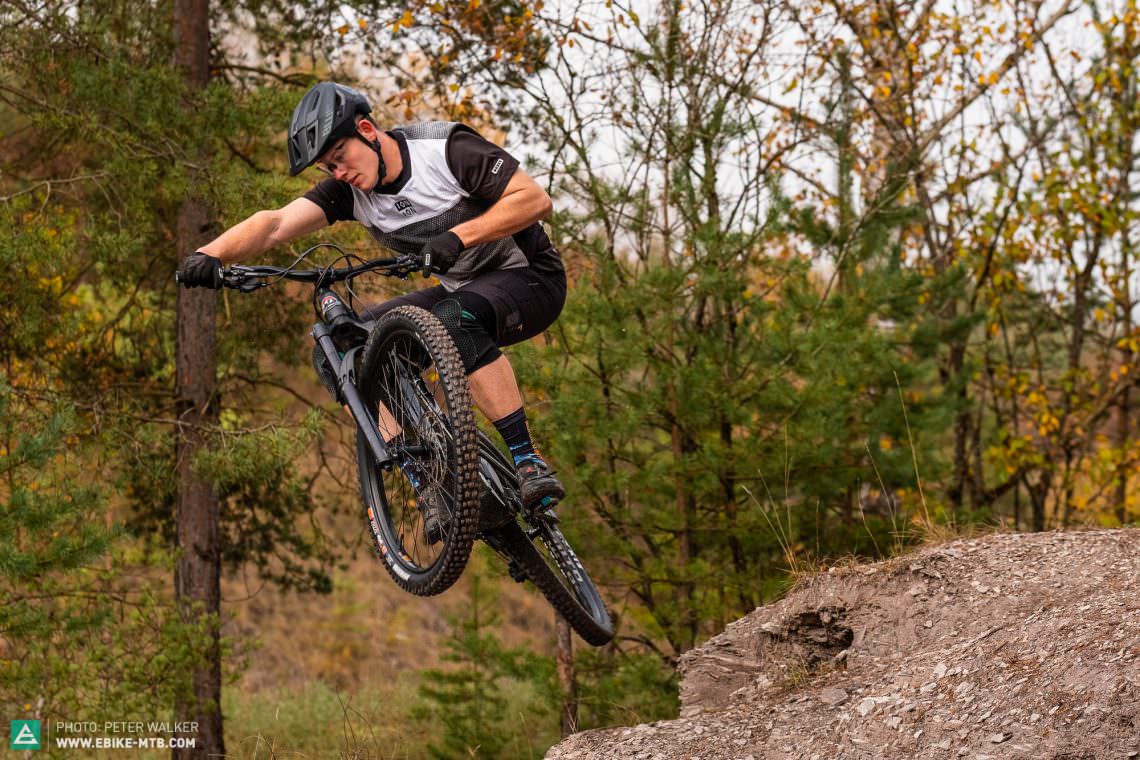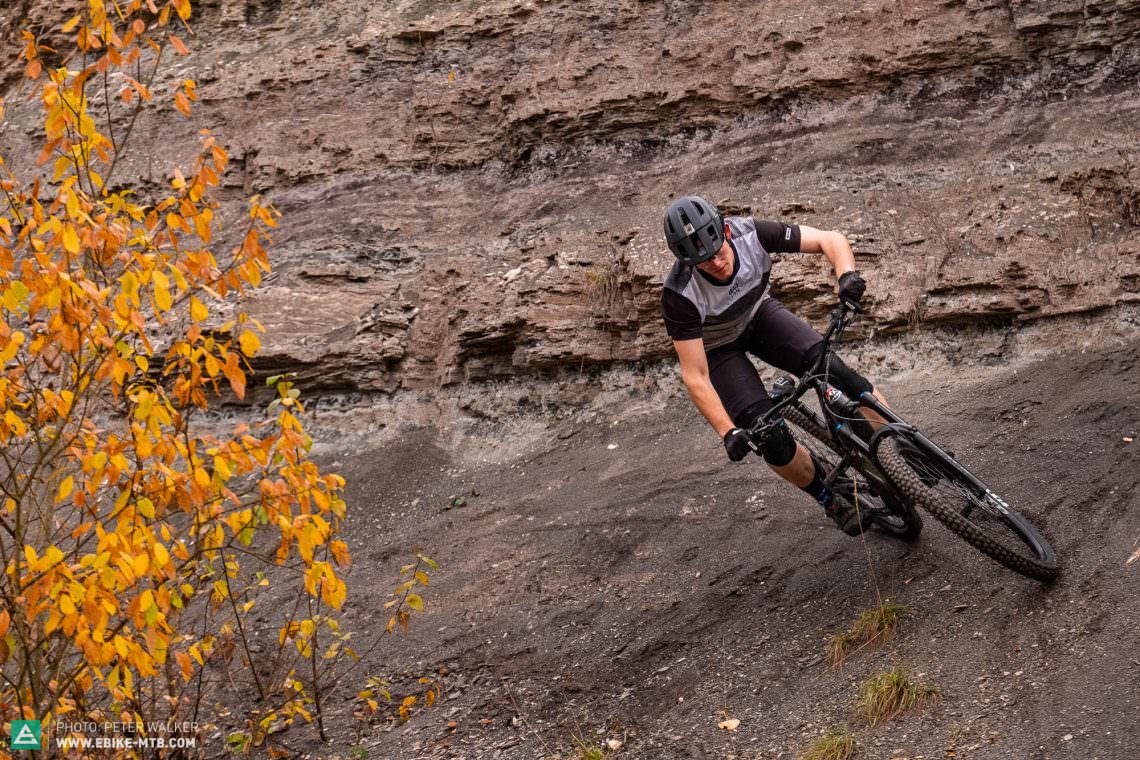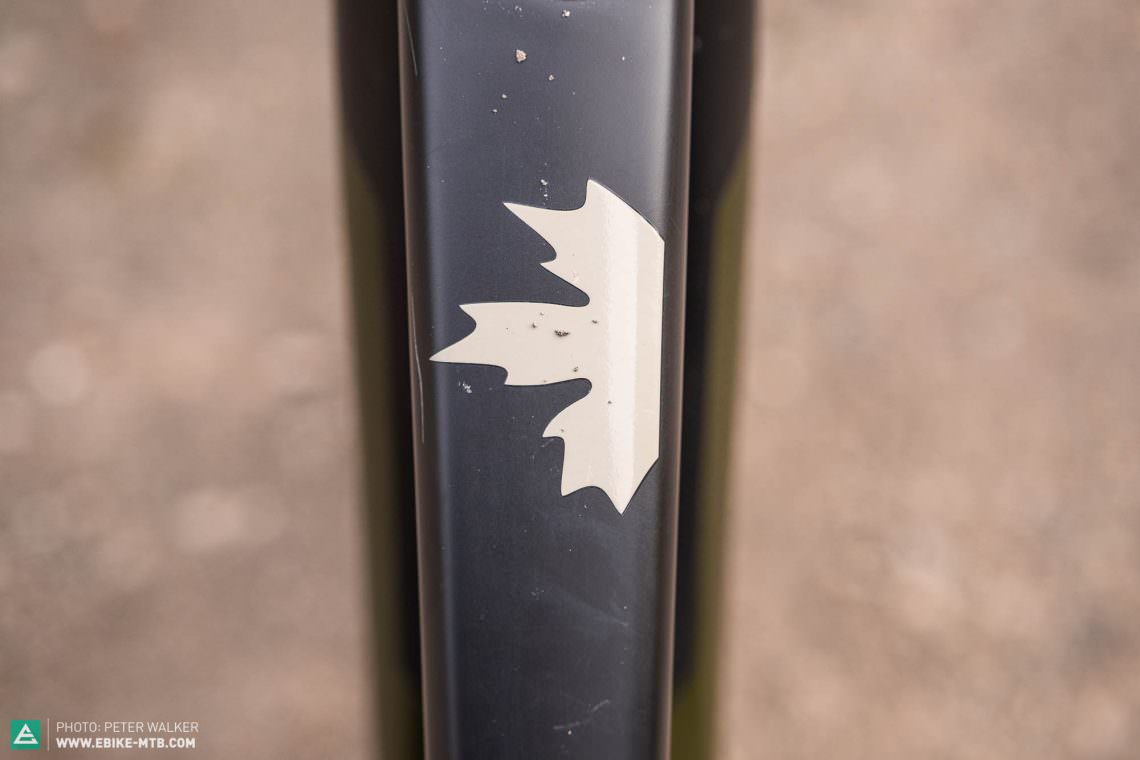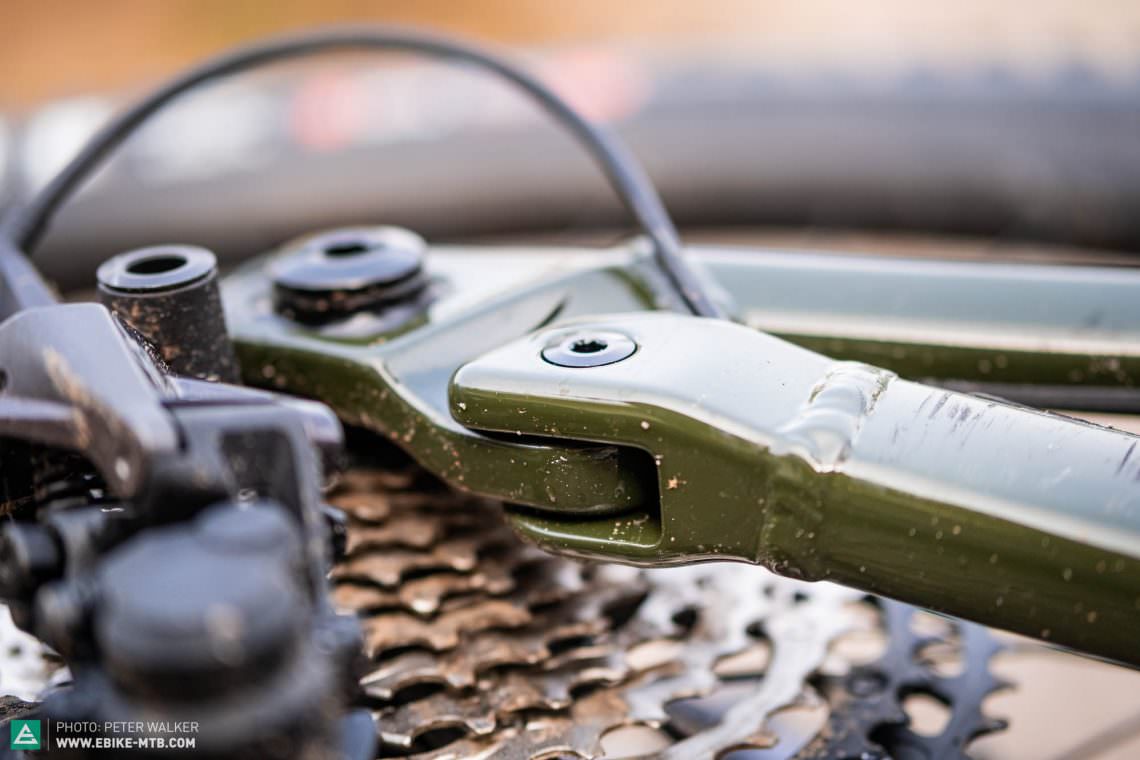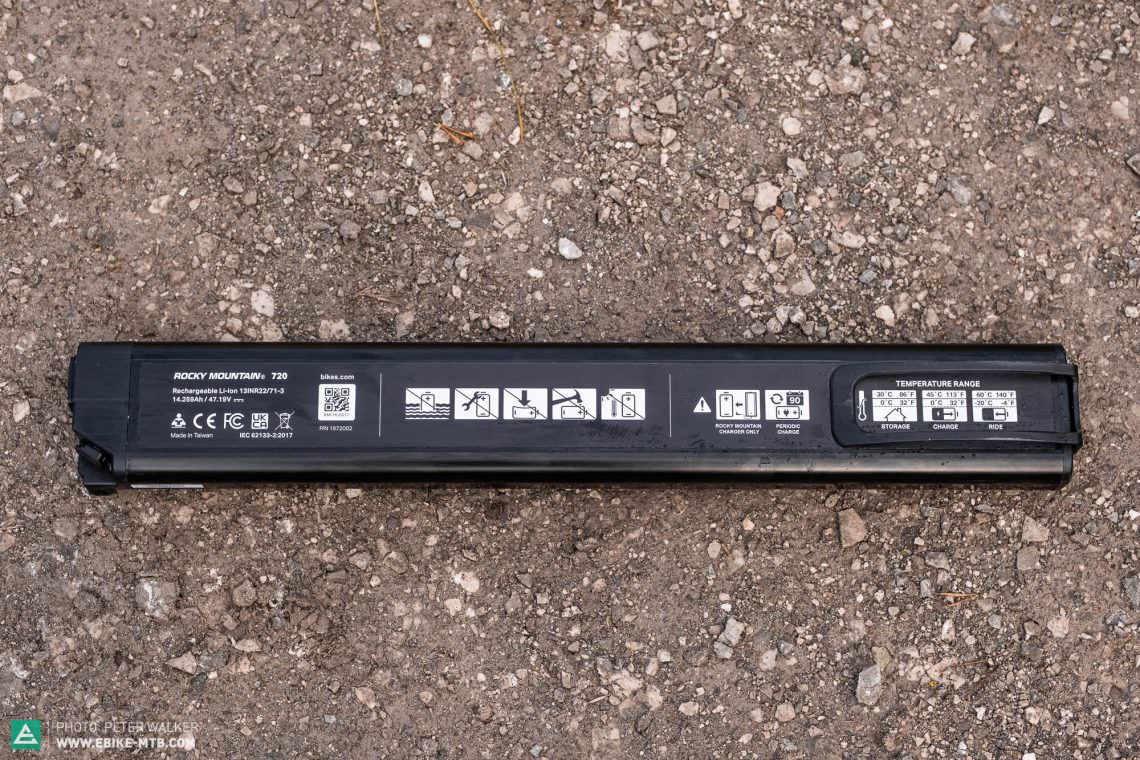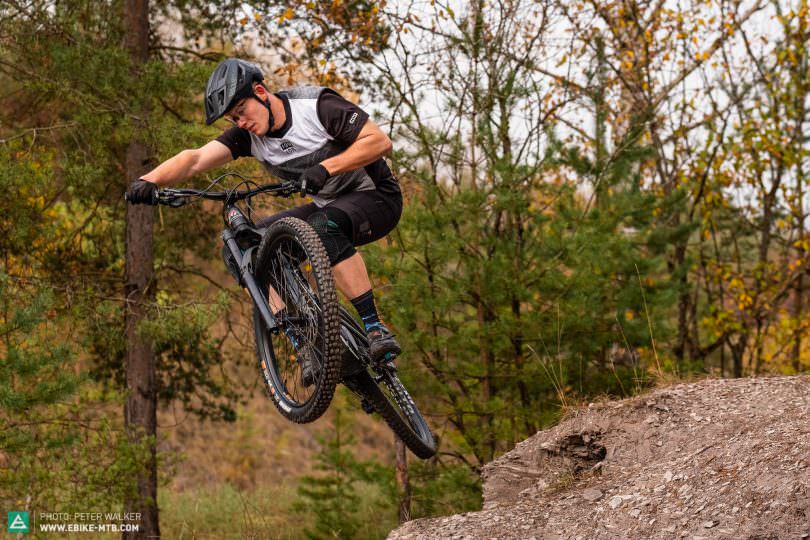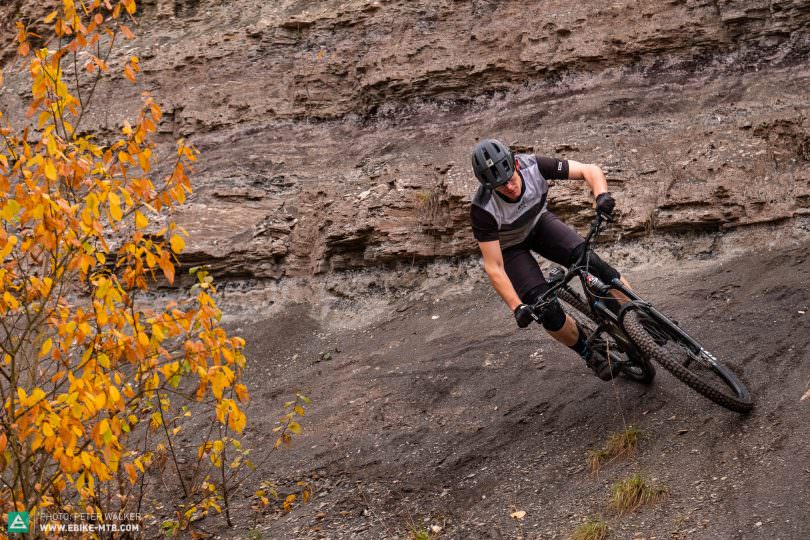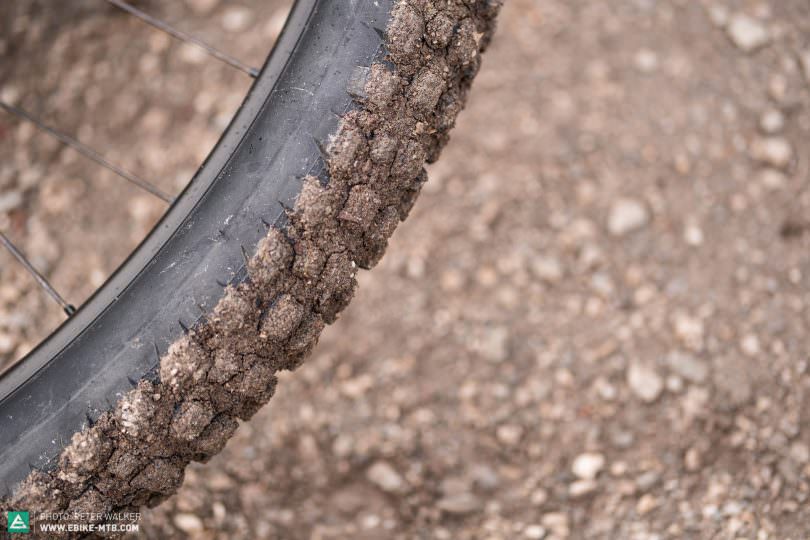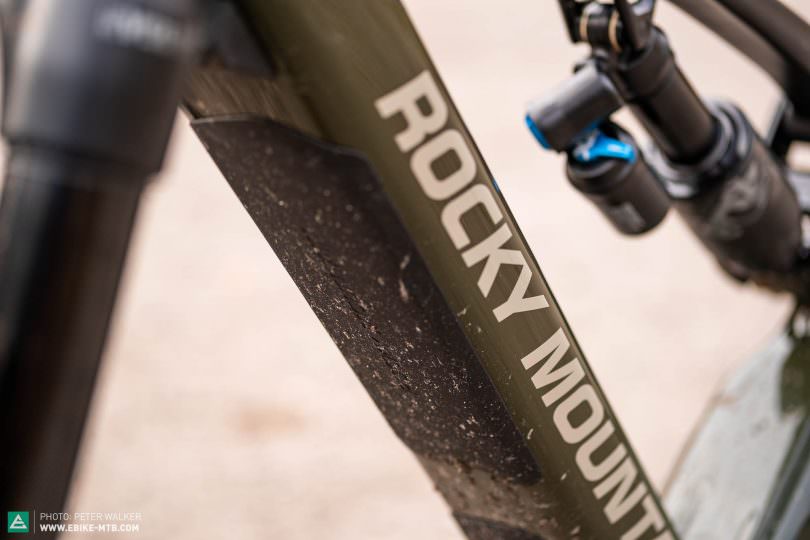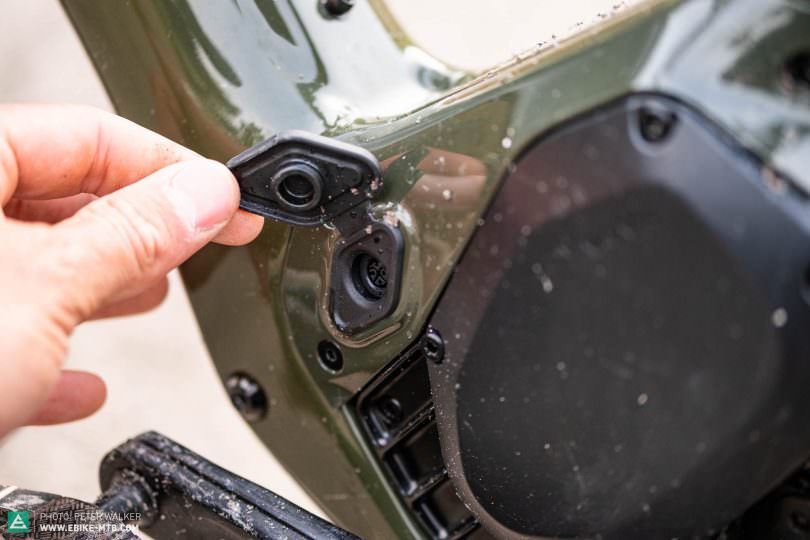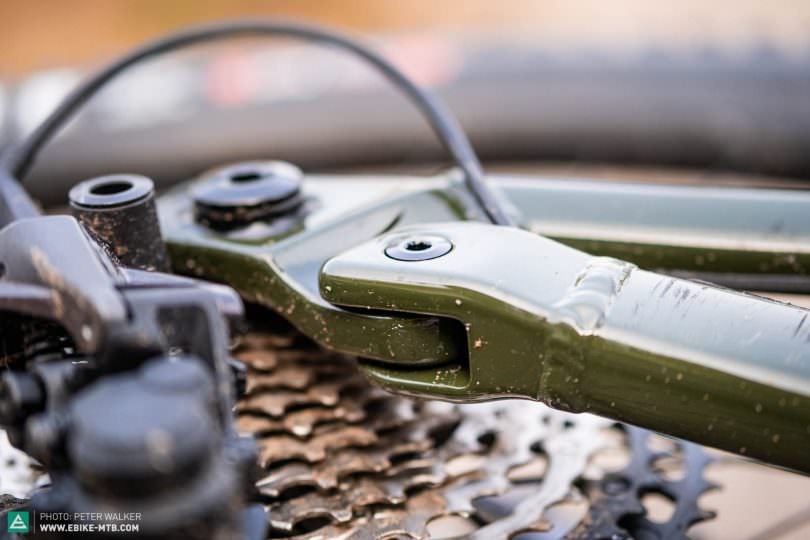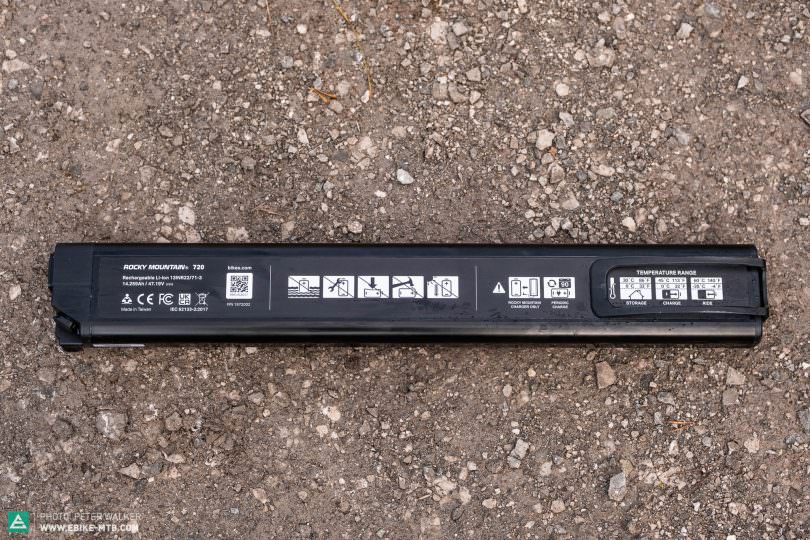Rocky Mountain have just unveiled their 2022 eMTB lineup. With its revised Dyname 4.0 motor, trail-focused spec and 720 Wh battery, the Rocky Mountain Altitude Powerplay C70 is ready to conquer the most remote backcountry trails. We’ve already tested the eMTB of the Canadian cult brand and can tell you how it fares on the trail.

24.5 kg in size L | € 8,800 | Manufacturer’s website
First off, congratulations to Rocky Mountain, who just turned 40 last September and have actively helped shape the future of mountain biking from the get go! Four years ago, the Canadian cult brand jumped on the eMTB wagon, introducing two very original and striking eMTB models, the Instinct and Altitude, which are both built around Rocky Mountain’s proprietary Powerplay motor. The updated 2022 models still rely on the brand’s own motor and battery system, which has also been revised from the ground up for the upcoming season. The new frame platforms of the Altitude Powerplay and Instinct Powerplay are built around the successor of the Dyname 3.0 motor, the brand-new Dyname 4.0. While the two bikes share several frame features, they were developed for different fields of application. The Altitude Powerplay, which rolls on 29” wheels and relies on 170 mm travel at the front and 160 mm at the rear, is aimed at fast, aggressive riders and demanding trails. The Instinct also rolls on big 29” wheels but has slightly less travel than the Altitude, offering 150/140 mm travel, at the front and rear respectively. According to Rocky Mountain, the Instinct is in its element on epic adventures and explorative tours. We had the exclusive opportunity to take the € 8,800 and 24.5 kg Rocky Mountain Altitude Powerplay C70 for a quick spin even before its official release. Read our first ride review to find out how it fared on the trail.

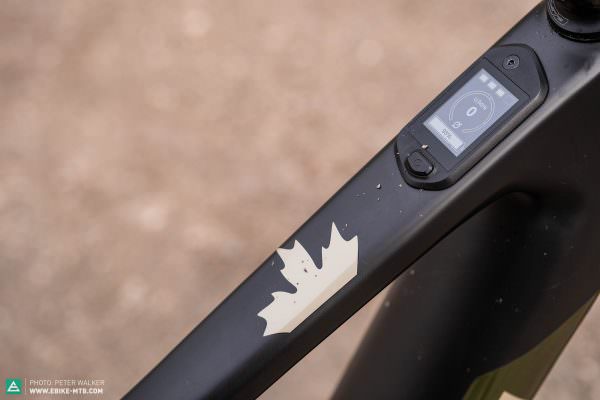
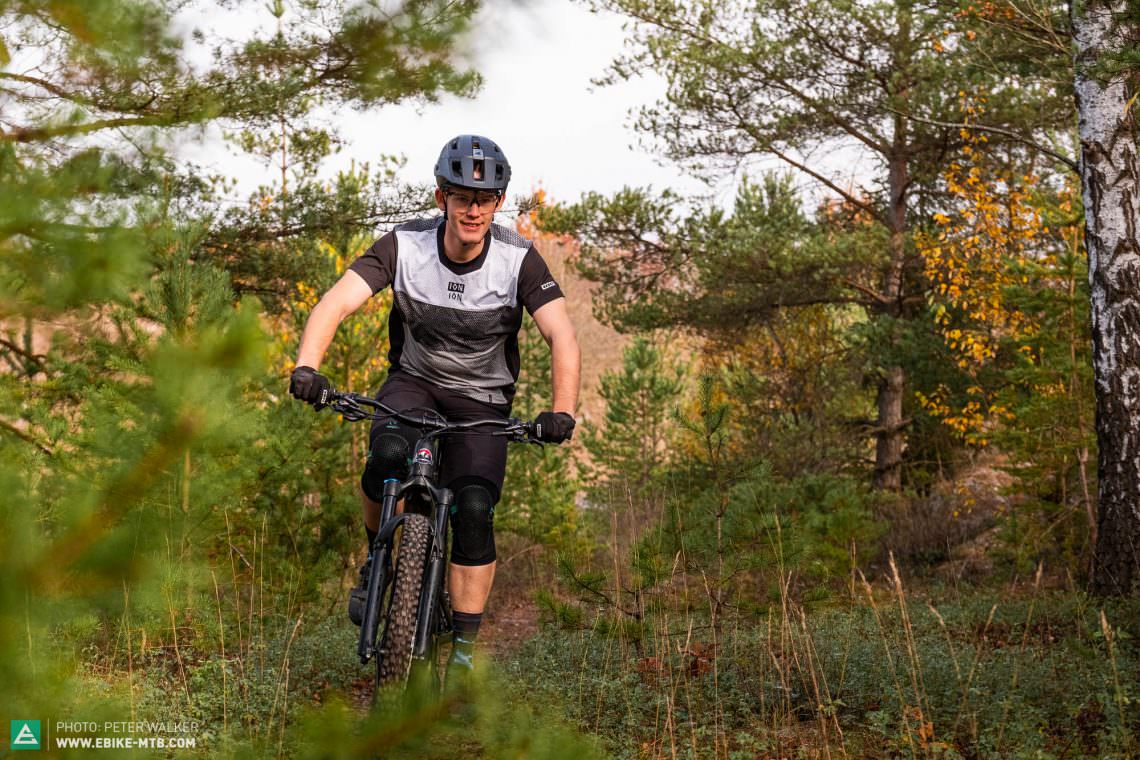
The new Dyname 4.0 motor of the Rocky Mountain Altitude Powerplay Carbon 70
The new Dyname 4.0 motor is the next evolutionary step up from Rocky Mountain’s unique motor concept. Instead of using the motors of established third-party manufacturers like Bosch or Shimano, the Canadian team has developed their own motor system in conjunction with Propulsion Powercycle. According to the Canadian manufacturer, the fourth-generation of the Dyname motor is much smaller and about 750 g lighter than its predecessor. Unlike conventional mid-drive motors, the Dyname 4.0 is integrated into the front frame triangle just above the bottom bracket and not just bolted to the bottom of it. Moreover, the Dyname 4.0 motor doesn’t transfer its power to the cranks and chainring, but directly to the chain via a small jockey wheel, while an additional pulley wheel serves as a torque sensor. This senses how strong you’re pedalling and thus how much tension you’re putting on the chain and sends the data directly to the motor system. Despite using a mid-drive motor, the Altitude Powerplay employs a conventional crankset and press-fit bottom bracket. This unconventional motor concept has several advantages but also some disadvantages. The position of the motor, for example, allows for shorter chainstays and gives bike designers more freedom in developing the rear triangle. The drawback? As its predecessor, the noise of the chain, which runs over several cogwheels, is significantly louder than most direct competitors. The motor itself, on the other hand, is particularly quiet and doesn’t rattle on rough terrain – which is the problem of many conventional mid-drive motors.
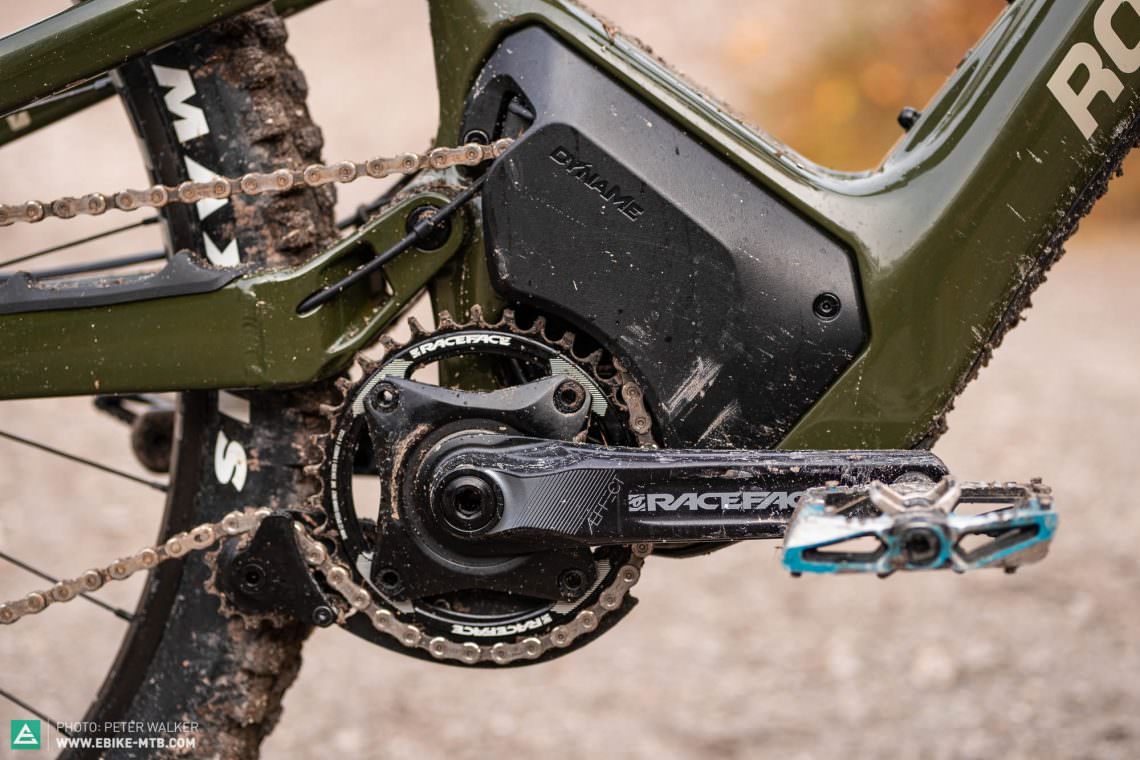
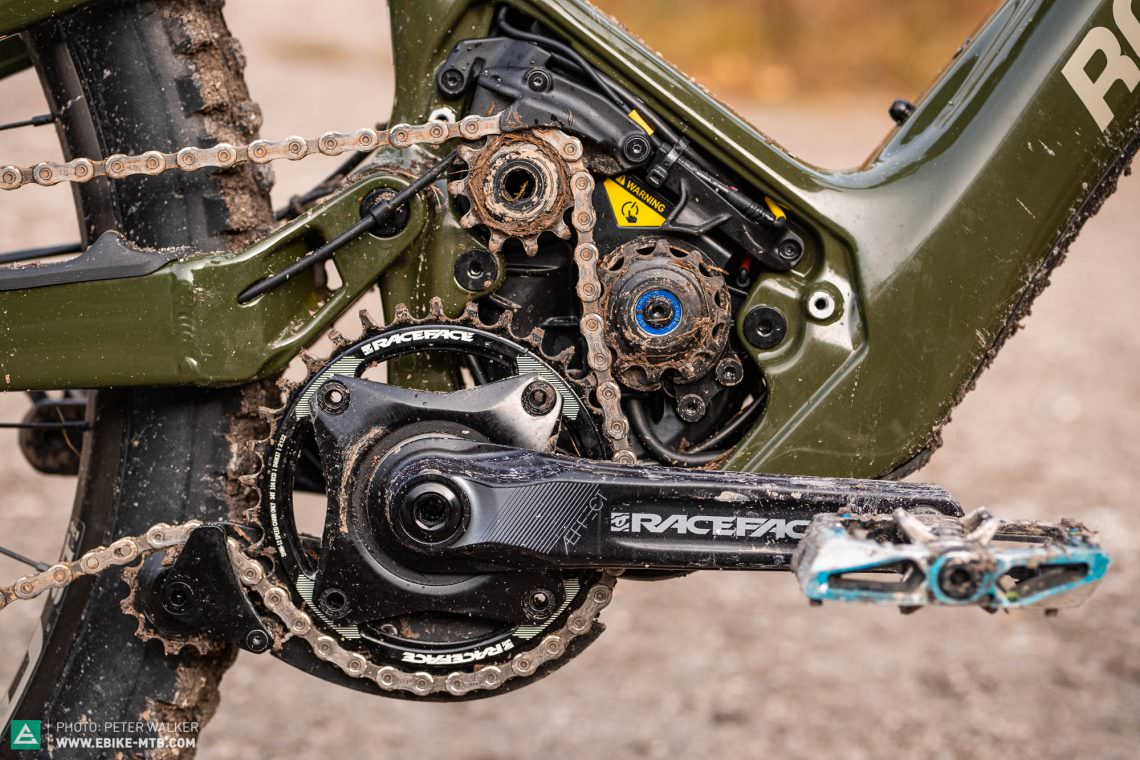
A classic Canada stereotype: All Canadians play ice hockey and eat at Tim Hortons at least once a week. The new Rocky Mountain Altitude Powerplay wants to shatter all preconceptions about Canadians, showing the world that Tim Hortons is nowhere near as popular in Canada as it might seem. However, there’s a clear connection between the Powerplay and ice hockey, at least semantically. In ice hockey, power play describes a period of play where one team has a numerical advantage in players, usually because one or more players of the opposing team are sitting in the penalty box. And that’s probably where the Altitude Powerplay gets its name from. Because with its 108 Nm torque, it’s significantly more powerful than most of its competitors with a mid-drive motor. The Dyname 4.0 draws its power from a 720 Wh battery integrated in the down tube. The charge-port sits right above the motor, where it’s easy to access. Unfortunately, the plug is tiny and requires some fiddling to plug in correctly. While the battery can be removed from the down tube for charging, you’ll have to undo a couple of bolts to pull it out of the frame. First you have to remove the plastic cover from the down tube and then you can undo the second bolt to remove the battery completely. For more range, you can use Rocky Mountain’s optional Overtime Pack, a 314 Wh range extender that can be attached directly to the bottle cage mount in the front triangle.
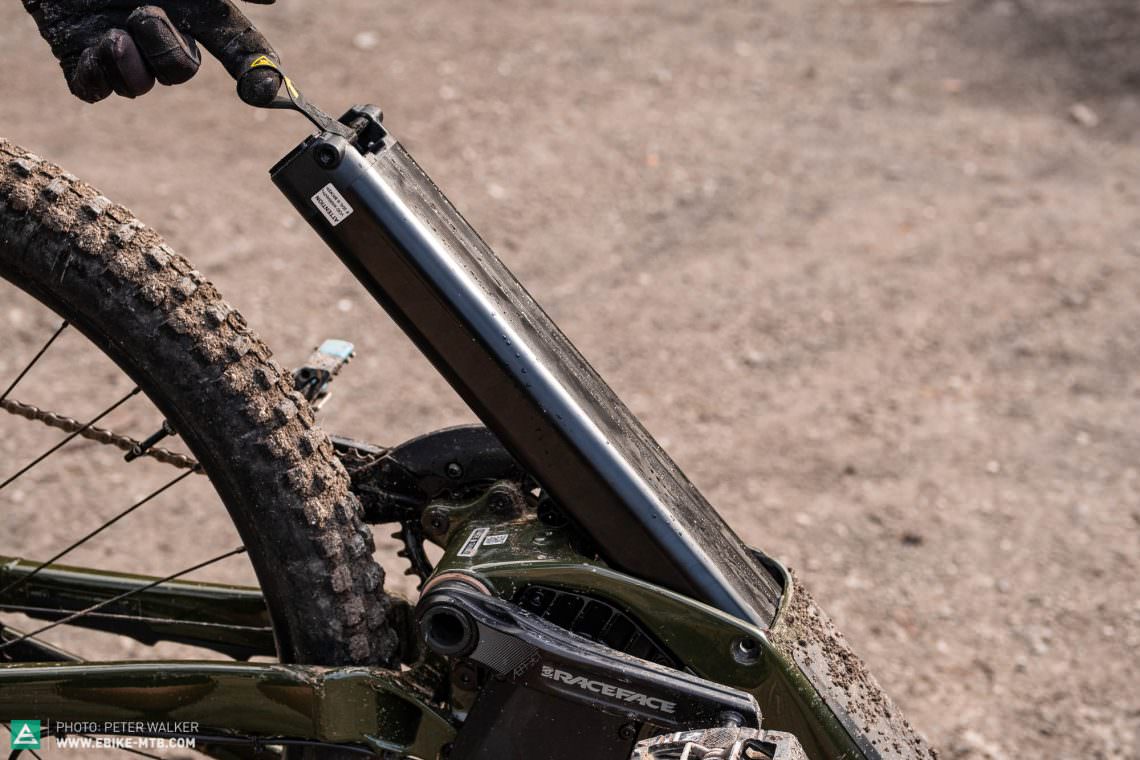
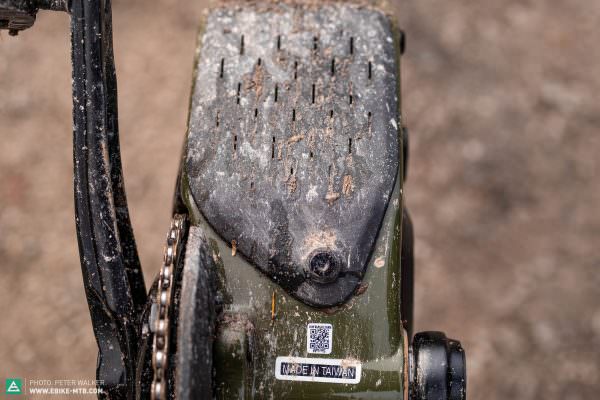
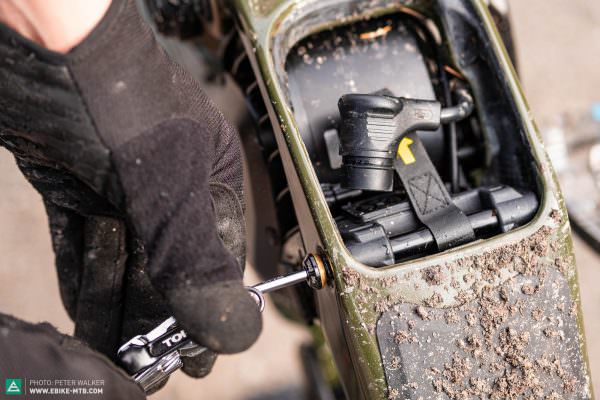
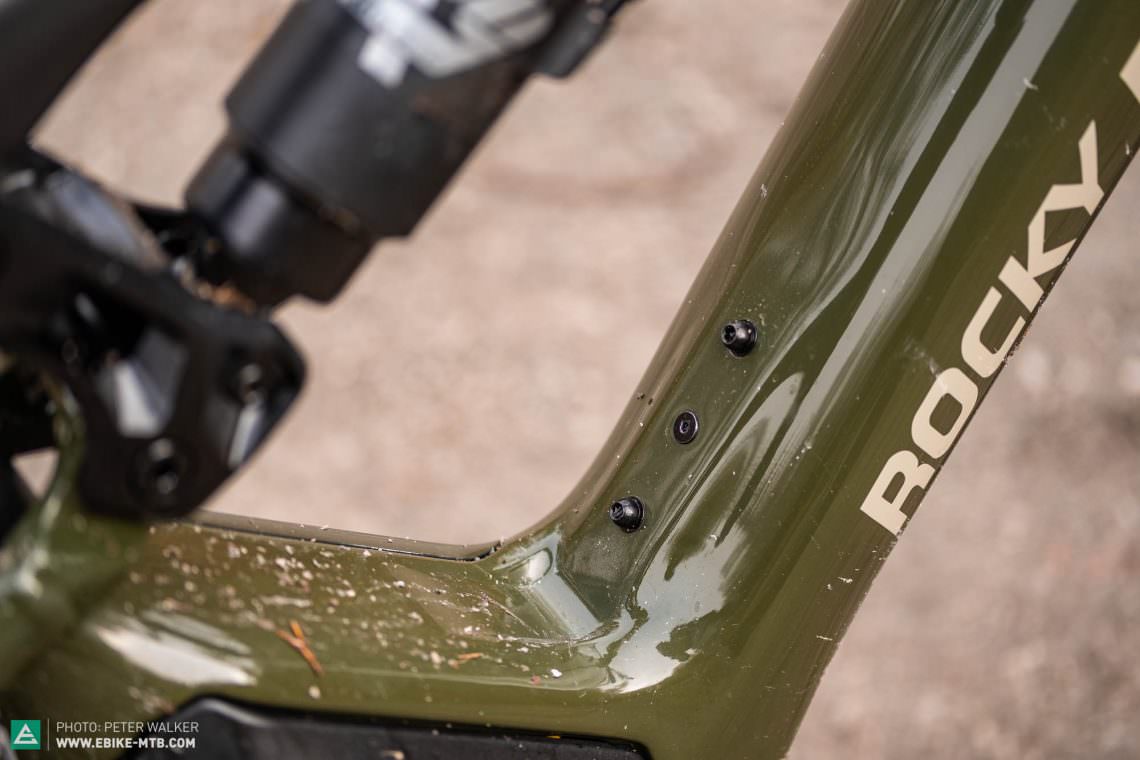
To control the motor system, Rocky Mountain rely on their new own-brand handlebar micro-remote and “Jumbotron Display”, which gets its name from the huge led video-walls found in North American sport arenas. The remote delivers good haptic feedback and is designed to fit snugly between the main brake clamp and additional support brace of Shimano brake levers. The Jumbotron display is neatly integrated into the top tube. Although you can’t watch a hockey game on the small black and white display, you can use it to fine-tune the maximum power output of the four support levels. Using Boost Menu, you can adjust the level of responsiveness of the motor to the rider’s pedalling input in five steps, from “Heavy Workout” to “Super Boost”. The settings can be saved in two separate profiles. Since all functions have been integrated directly into the Jumbotron display, there’s no longer an interface to the EBikemotion app. By pressing and holding down the “+” and “confirm” button on the remote, you’ll access a troubleshooting submenu that helps you understand and fix error messages and also allows you to recalibrate the torque sensor.
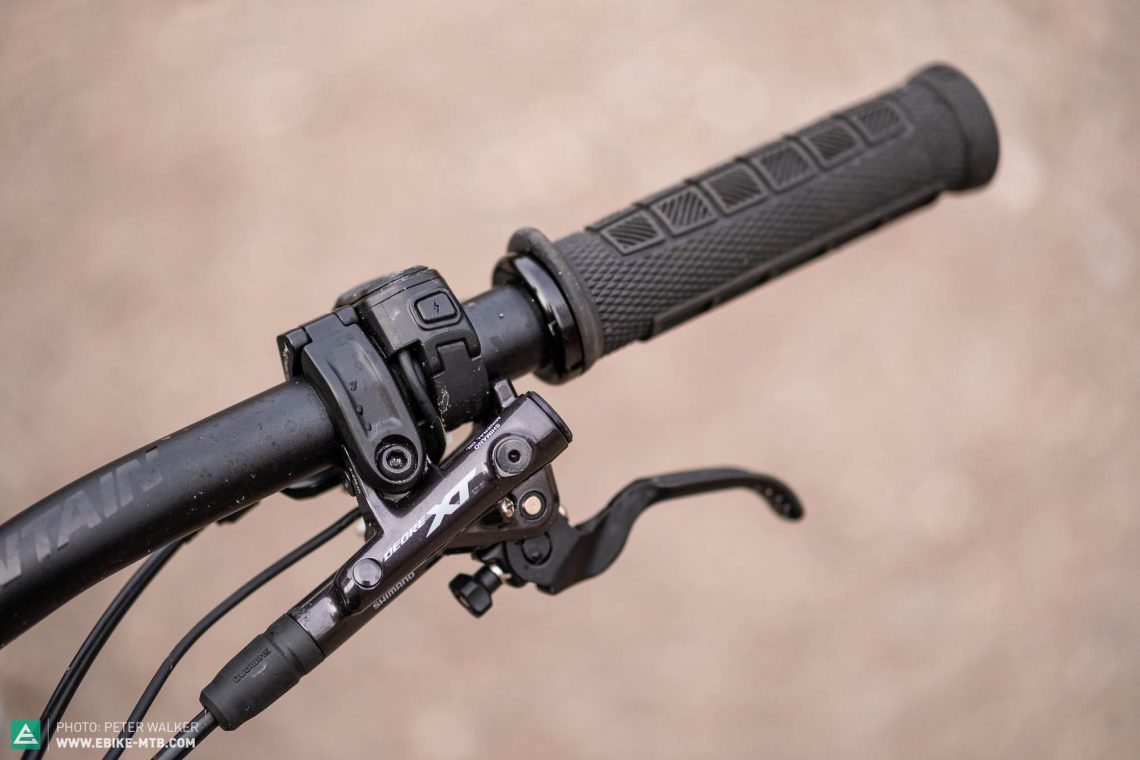

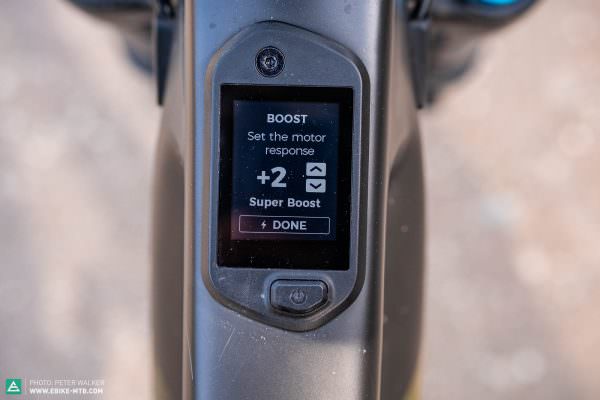
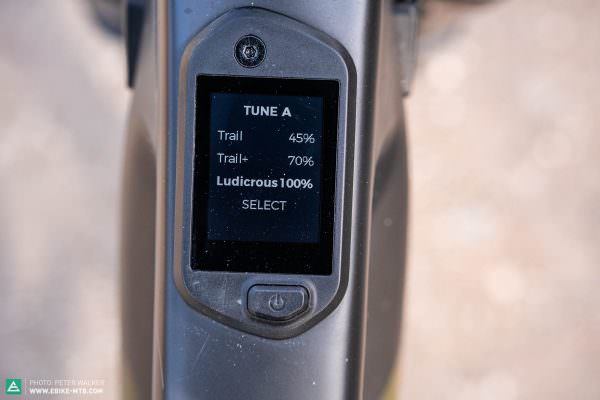
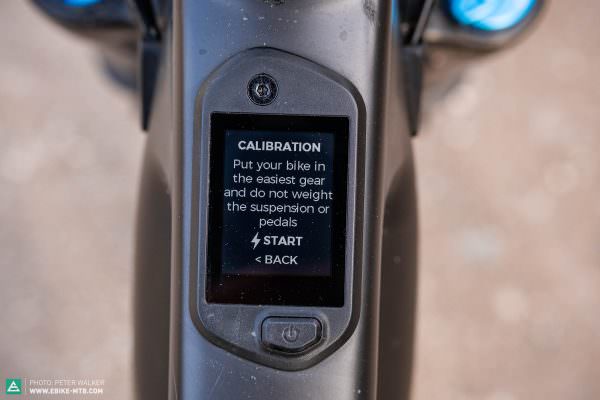
The Rocky Mountain Altitude Powerplay Carbon 70 in detail
The new Rocky Mountain Altitude Powerplay Carbon 70 is a real eye catcher. Rocky Mountain’s electric-trail-bruiser combines an elegant carbon frame with an alloy swingarm. The C90 flagship model has a carbon frame and carbon swingarm, while the A70 and A50 models feature a full alloy frame. The down tube is relatively slim for an eMTB with a big 720 Wh battery. A reasonably-sized seat and chainstay protector prevents scratches and paint chips while a huge TPU plate on the down tube protects the frame and motor housing from stray rocks and nasty impacts – awesome! A stopper has also been fitted to the upper end of the down tube to prevent the fork from twisting in the event of a crash and thus prevent further damage. The speed sensor is safely integrated inside the dropout and calculates the speed using a magnet in the brake rotor.
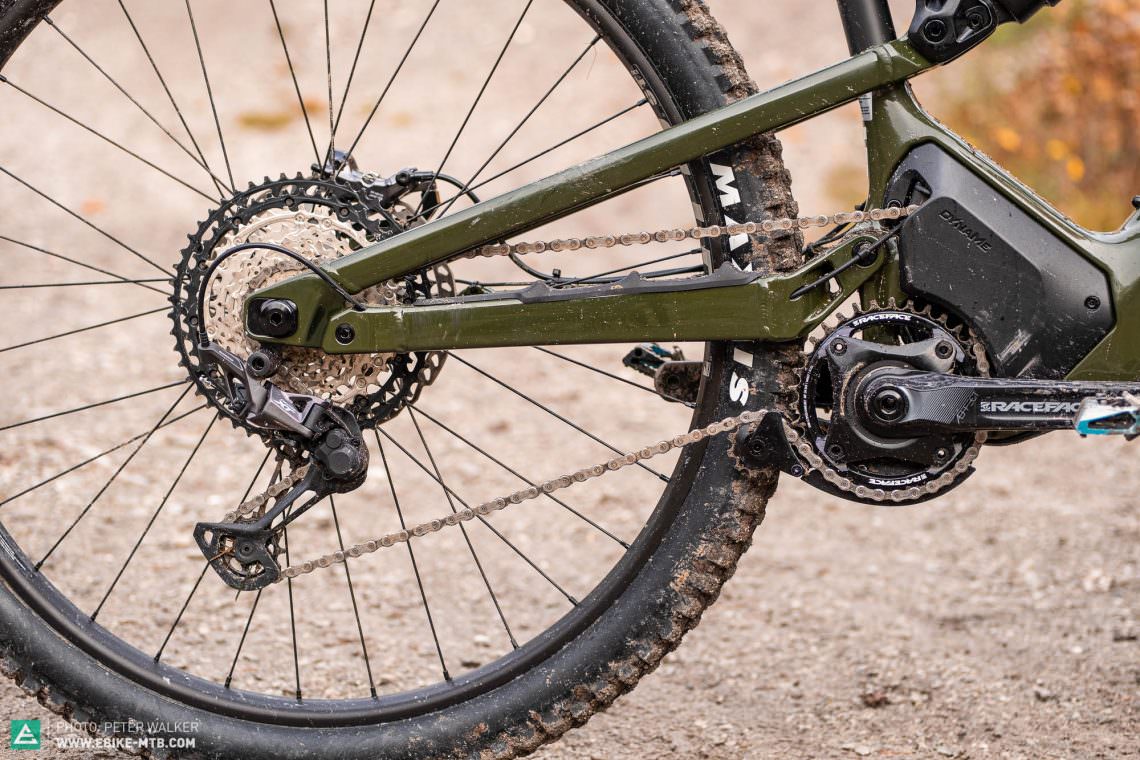



The spec of the Rocky Mountain Altitude Powerplay Carbon 70
Just by looking at the spec of the Altitude Powerplay C70, it becomes clear that performance was high on the list of priorities of Rocky Mountain’s engineers. The suspension consists of a FOX 38 Performance fork and FOX Float X2 shock, controlling 170/160 mm travel respectively. Unfortunately, the basic GRIP damper of the FOX 38 fork is the only bitter note in an otherwise very sweet spec – we would have loved the superior GRIP2 damper! A Shimano XT 12-speed drivetrain ensures accurate shifting while matching XT four-piston brakes with 200 mm rotors provide reliable and powerful deceleration. The tire setup made the hearts of the entire E-MOUNTAINBIKE test crew beat a little faster: here Rocky Mountain really hit the nail on the head, combining a 2.5” MAXXIS ASSEGAI with soft MaxxGrip compound at the front with a 2.4” MAXXIS Minion DHR II with slightly harder MaxxTerra compound at the rear – tubeless, of course! A massive shout out and round of applause goes to Rocky Mountain, who consistently spec their bikes with puncture-proof DoubleDown tires and even deliver most of their bikes (from C90 to A50) with a CushCore as standard. The popular grey tire insert protects the rims against impacts and prevents pinch flats. Moreover, it supports the sidewalls of the tires, allowing you to run lower tire pressures and thus improve traction. The harmonious spec is rounded off by WTB alloy rims, Rocky Mountain’s own-brand alloy cockpit and 175 mm Race Face Aeffect R dropper post. Except for the damper of the fork, the spec is perfect for rowdy trail and downhill riding – we wouldn’t change a single component!
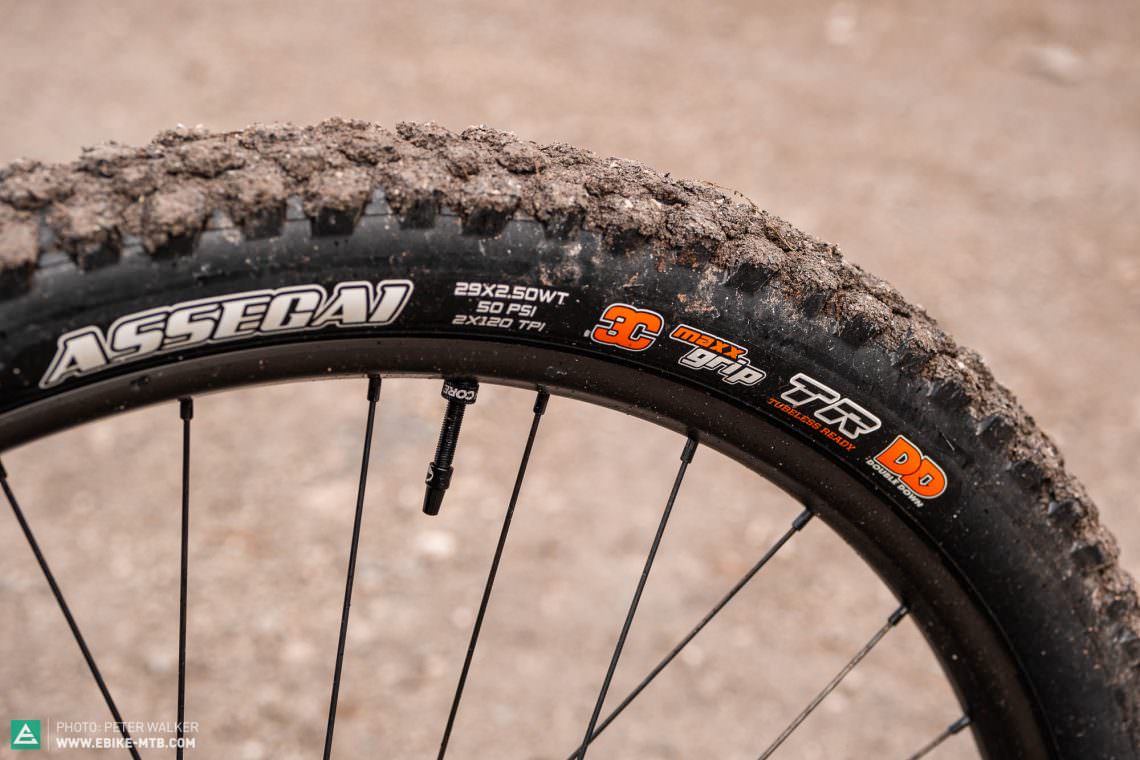
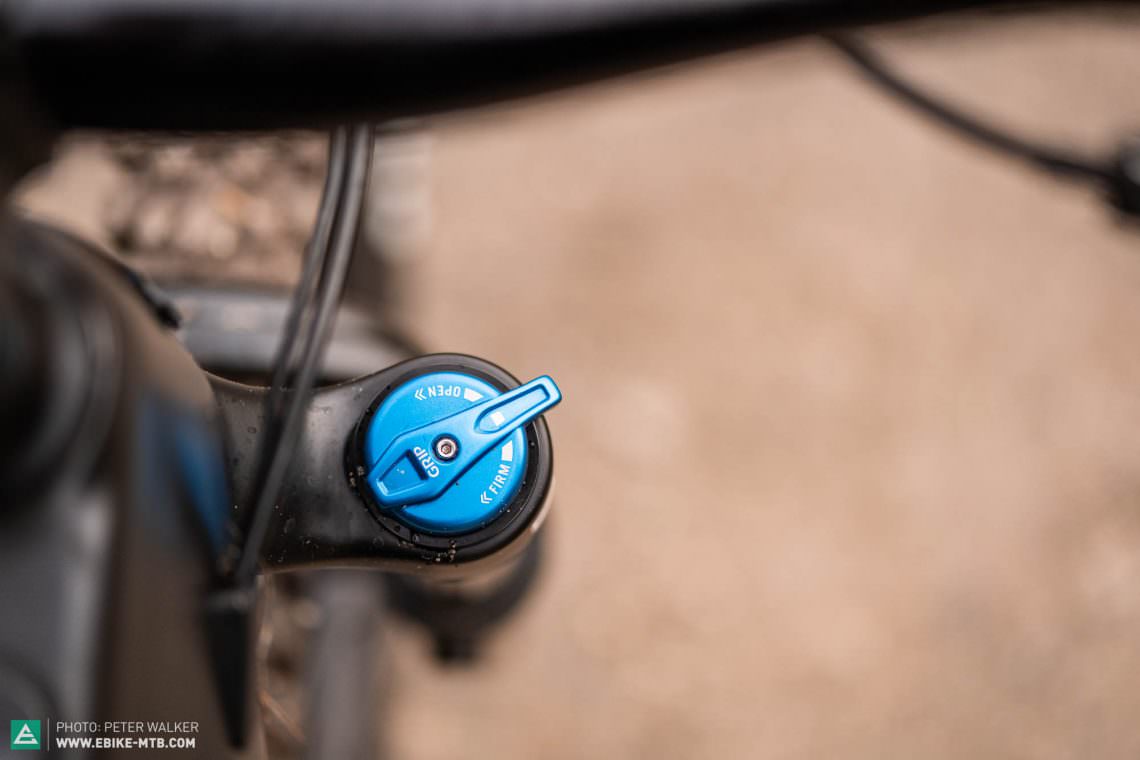

Rocky Mountain Altitude Powerplay C70
€ 8,800
Specifications
Motor Dyname 4.0 108 Nm
Battery Powerplay Akku 720 Wh
Display Jumbotron
Fork FOX 38 Performance 170 mm
Rear Shock FOX Float X2 Performance 160 mm
Seatpost Race Face Aeffect R 125 – 175 mm
Brakes Shimano XT M8120 200/200 mm
Drivetrain Shimano XT 1x12
Stem Rocky Mountain 35 AM 40 mm
Handlebar Rocky Mountain AM 780 mm
Wheelset WTB ST i30 TCS 2.0 29"
Tires MAXXIS ASSEGAI DD/ Minion DHR II DD 2.5"/2.4"
Technical Data
Size S M L XL
Weight 24.5 kg
Perm. total weight 120 kg
Max. payload (rider/equipment) 95
Trailer approval no
Kickstand mount no
Other models of the Rocky Mountain Altitude Powerplay and Instinct Powerplay
Alongside the Carbon 70 model we tested, Rocky Mountain presented a special Altitude Carbon 90 Rally Edition, which costs € 11,000 and comes equipped with a DHX2 coil shock, carbon swingarm and slightly better components. On top of that, the Canadians have announced two interesting alloy versions for the European market, the Alloy 70 and Alloy 50. Except for the FOX Float X shock, the spec of the Alloy 70 is comparable with the Carbon 70 model, which is pretty excellent considering that the alloy version only costs € 7,600.
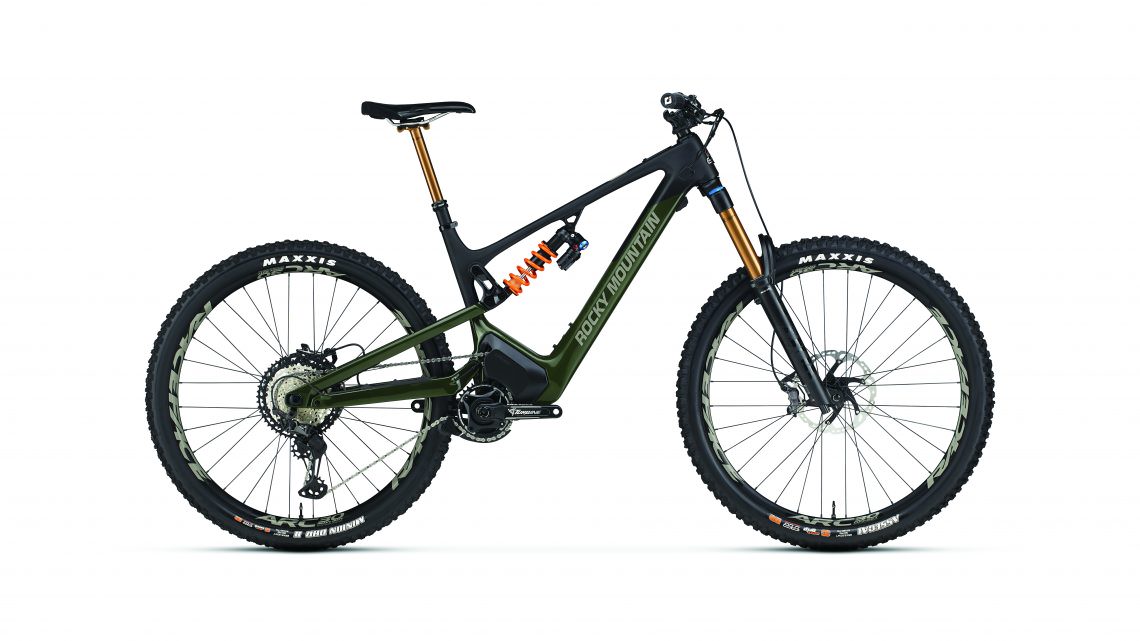
Rocky Mountain Altitude Powerplay C90 Rally Edition
€ 11,000
Specifications
Motor Dyname 4.0 108 Nm
Battery Powerplay Akku 720 Wh
Display Jumbotron
Fork FOX 38 Factory Grip 2 170 mm
Rear Shock FOX DHX2 Factory 160 mm
Seatpost Fox Transfer Factory 125 – 200 mm
Brakes Shimano XT M8120 200/200 mm
Drivetrain Shimano XT 1x12
Stem Rocky Mountain 35 CNC 40 mm
Handlebar Race Face Turbine R 780 mm
Wheelset Race Face ARC HD 30 29"
Tires MAXXIS ASSEGAI DD/ Minion DHR II DD 2.5"/2.4"
Technical Data
Size S M L XL
Perm. total weight 120 kg
Max. payload (rider/equipment) -
Trailer approval no
Kickstand mount no
Rocky Mountain Altitude Powerplay A70
€ 7,600
Specifications
Motor Dyname 4.0 108 Nm
Battery Powerplay Akku 720 Wh
Display Jumbotron
Fork FOX 38 Performance 170 mm
Rear Shock FOX Float X Performance 160 mm
Seatpost Race Face Aeffect R 125 – 175 mm
Brakes Shimano XT M8120 200/200 mm
Drivetrain Shimano XT/Deore 1x12
Stem Rocky Mountain 35 AM 40 mm
Handlebar Rocky Mountain AM 780 mm
Wheelset WTB ST i30 TCS 2.0 29"
Tires MAXXIS ASSEGAI DD/ Minion DHR II DD 2.5"/2.4"
Technical Data
Size S M L XL
Perm. total weight 120 kg
Max. payload (rider/equipment) -
Trailer approval no
Kickstand mount no
Rocky Mountain Altitude Powerplay A50
€ 6,900
Specifications
Motor Dyname 4.0 108 Nm
Battery Powerplay Akku 720 Wh
Display Jumbotron
Fork RockShox Zeb Select RC 170 mm
Rear Shock FOX Float X Performance 160 mm
Seatpost Rocky Mountain Toonie 125 – 170 mm
Brakes Shimano DEORE MT6120 200/200 mm
Drivetrain Shimano XT/SLX/DEORE 1x12
Stem Rocky Mountain 35 AM 40 mm
Handlebar Rocky Mountain AM 780 mm
Wheelset WTB ST i30 TCS 2.0 29"
Tires MAXXIS ASSEGAI DD/ Minion DHR II DD 2.5"/2.4"
Technical Data
Size S M L XL
Perm. total weight 120 kg
Max. payload (rider/equipment) -
Trailer approval no
Kickstand mount no
Alongside the new Altitude, Rocky Mountain have unveiled the next generation of the Instinct Powerplay, which is aimed at enthusiastic backcountry adventurers and moderate trail riders. The new Instinct lineup includes several carbon and alloy models with prices ranging from €12,500 for the flagship Carbon 90 model to €5,600 for the Alloy 30 version. All models roll on 29″ wheels, rely on air suspension and combine 150/140 mm travel at the front and rear respectively.
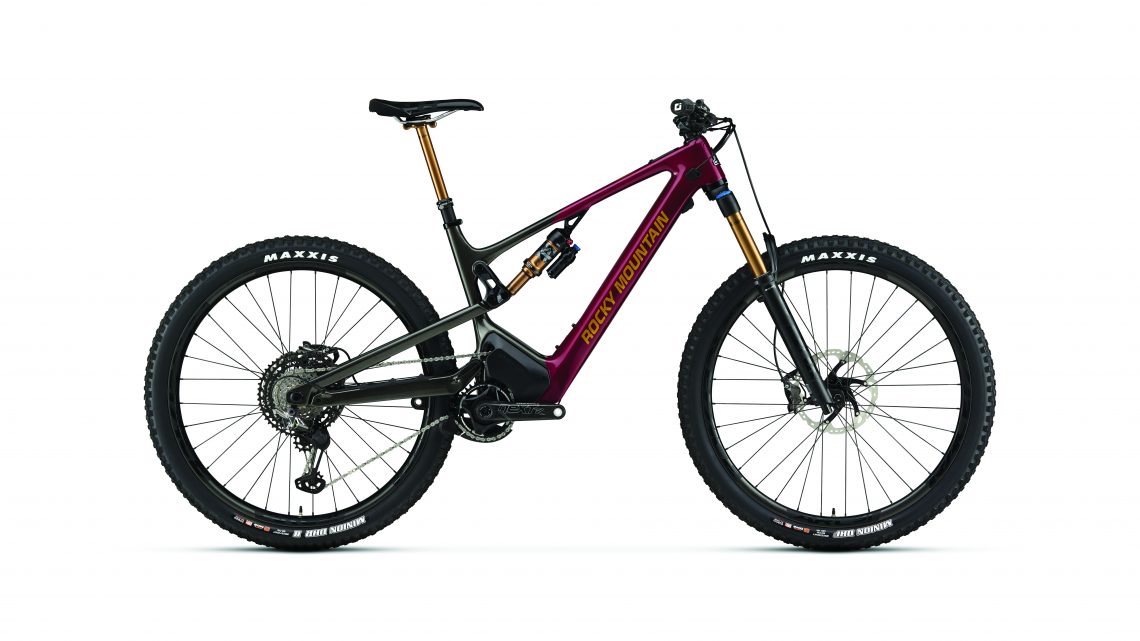
Rocky Mountain Instinct Powerplay C90
€ 12,500
Specifications
Motor Dyname 4.0 108 Nm
Battery Powerplay Akku 720 Wh
Display Jumbotron
Fork FOX 36 Factory GRIP2 150 mm
Rear Shock FOX Float X Factory 140 mm
Seatpost Fox Transfer Factory 125 – 200 mm
Brakes Shimano XTR M9120 200/200 mm
Drivetrain Shimano XTR 1x12
Stem Rocky Mountain 35 CNC 40 mm
Handlebar Race Face Next R 780 mm
Wheelset Race Face ARC Carbon 31 29"
Tires MAXXIS Minion DHF EXO+/DHRII EXO+ 2.5"/2.4"
Technical Data
Size S M L XL
Perm. total weight 120 kg
Max. payload (rider/equipment) -
Trailer approval no
Kickstand mount no
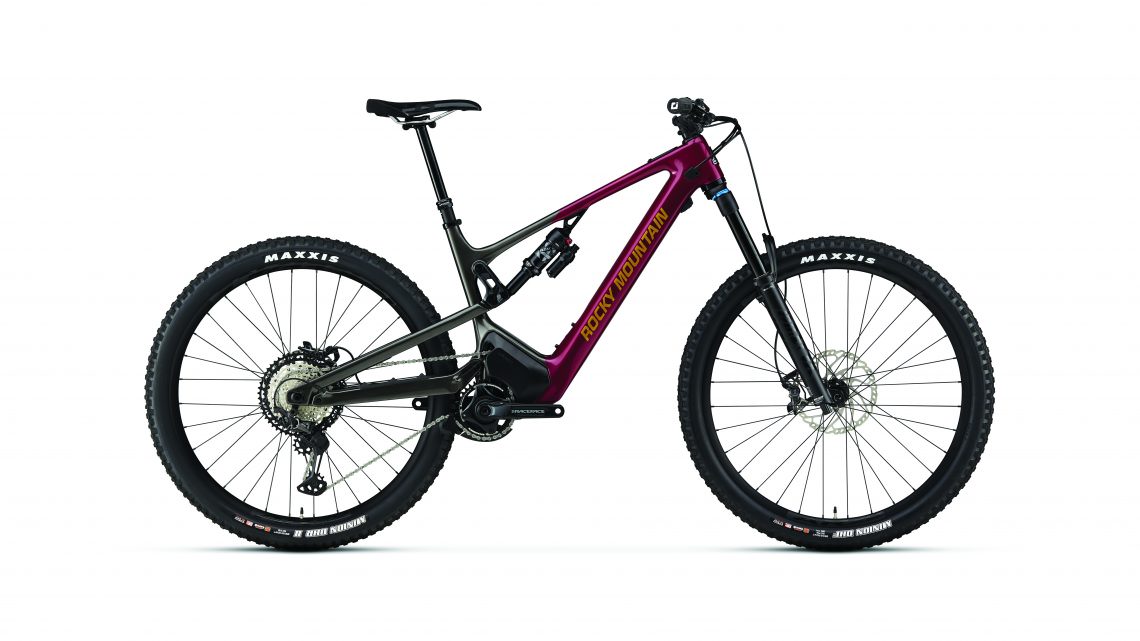
Rocky Mountain Instinct Powerplay C70
€ 8,900
Specifications
Motor Dyname 4.0 108 Nm
Battery Powerplay Akku 720 Wh
Display Jumbotron
Fork FOX 36 Performance 150 mm
Rear Shock FOX Float X Performance 140 mm
Seatpost Race Face Turbine R 125 – 200 mm
Brakes Shimano XT M8120 200/200 mm
Drivetrain Shimano XT 1x12
Stem Rocky Mountain 35 AM 40 mm
Handlebar Rocky Mountain AM 780 mm
Wheelset Race Face AR 30 29"
Tires MAXXIS Minion DHF EXO+/DHRII EXO+ 2.5"/2.4"
Technical Data
Size S M L XL
Perm. total weight 120 kg
Max. payload (rider/equipment) -
Trailer approval no
Kickstand mount no
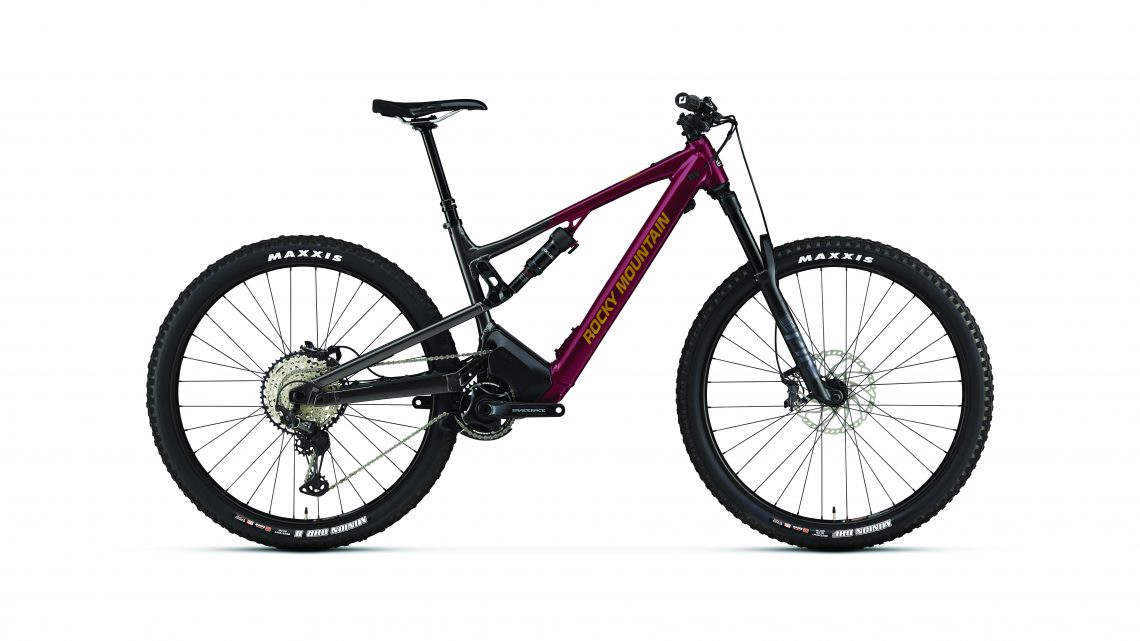
Rocky Mountain Instinct Powerplay A70
€ 7,300
Specifications
Motor Dyname 4.0 108 Nm
Battery Powerplay Akku 720 Wh
Display Jumbotron
Fork RockShox Pike Select+ 150 mm
Rear Shock RockShox Deluxe Select+ 140 mm
Seatpost Race Face Aeffect R 125 – 175 mm
Brakes Shimano XT M8120 200/200 mm
Drivetrain Shimano XT/SLX 1x12
Stem Rocky Mountain 35 AM 40 mm
Handlebar Rocky Mountain AM 780 mm
Wheelset WTB ST i30 TCS 2.0 29"
Tires MAXXIS Minion DHF EXO+/DHRII EXO+ 2.5"/2.4"
Technical Data
Size S M L XL
Perm. total weight 120 kg
Max. payload (rider/equipment) -
Trailer approval no
Kickstand mount no
Rocky Mountain Instinct Powerplay A50
€ 6,600
Specifications
Motor Dyname 4.0 108 Nm
Battery Powerplay Akku 720 Wh
Display Jumbotron
Fork RockShox Revelation Select RC 150 mm
Rear Shock RockShox Deluxe Select+ 140 mm
Seatpost Race Face Aeffect R 125 – 175 mm
Brakes Shimano DEORE MT6120 200/200 mm
Drivetrain Shimano SLX 1x12
Stem Rocky Mountain 31.8 AM 40 mm
Handlebar Rocky Mountain AM 780 mm
Wheelset WTB ST i30 TCS 2.0 29"
Tires MAXXIS Minion DHF EXO/ DHR II EXO 2.5"/2.4"
Technical Data
Size S M L XL
Perm. total weight 120 kg
Max. payload (rider/equipment) -
Trailer approval no
Kickstand mount no
Rocky Mountain Instinct Powerplay A30
€ 5,600
Specifications
Motor Dyname 4.0 108 Nm
Battery Powerplay Akku 720 Wh
Display Jumbotron
Fork RockShox 35 Gold RL 150 mm
Rear Shock RockShox Deluxe Select R 140 mm
Seatpost Rocky Mountain Toonie 125 – 170 mm
Brakes Shimano MT4120 200/200 mm
Drivetrain Shimano DEORE 1x11
Stem Rocky Mountain 31.8 AM 40 mm
Handlebar Rocky Mountain AM 780 mm
Wheelset WTB ST i30 TCS 2.0 29"
Tires MAXXIS Minion DHF EXO/ DHR II EXO 2.5"/2.4"
Technical Data
Size S M L XL
Perm. total weight 120 kg
Max. payload (rider/equipment) -
Trailer approval no
Kickstand mount no
The geometry of the Rocky Mountain Altitude Powerplay Carbon 70
The geometry of the Rocky Mountain Altitude Powerplay is variable and can be adjusted to your needs and preferences. The RIDE-4 system lets you adjust the geometry of the bike in four different positions via a flip chip in the shock mount using a 5 mm Allen key. By changing the position of the flip chip, you can slacken or steepen the head- and seat-angles by just under 1 °. Moreover, the different settings influence the progression of the shock and thus the performance of the rear suspension. An additional flip chip in the dropout allows you to change the chainstay length by 10 mm. All changes can be performed using simple tools and don’t require additional parts such as different headset cups. At 445 mm in size L, the seat tube is relatively short, while at 480 mm, the reach is rather long. The 634 mm stack height paired with the 35 mm handlebar rise make for a high front end. In the slacker RIDE-4 setting, the 75.5 ° seat tube angle is… erm, slack! That being said, you can steepen the seat tube angle by almost 1° using the steeper setting.
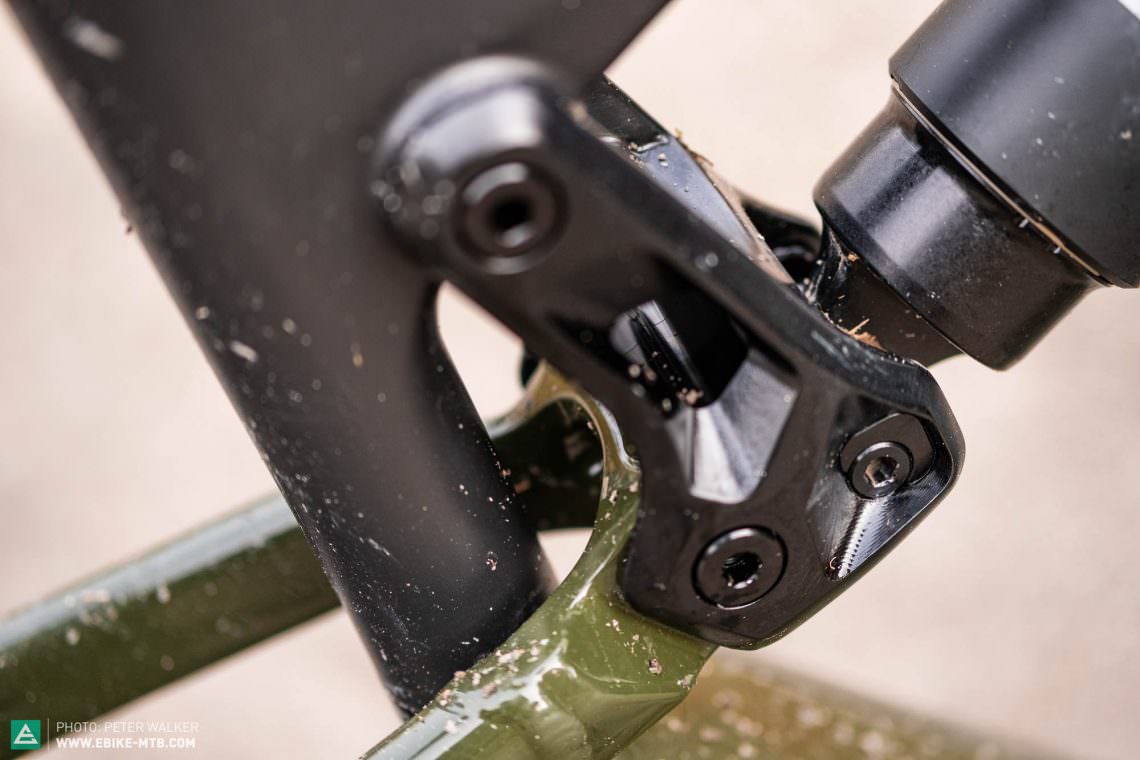
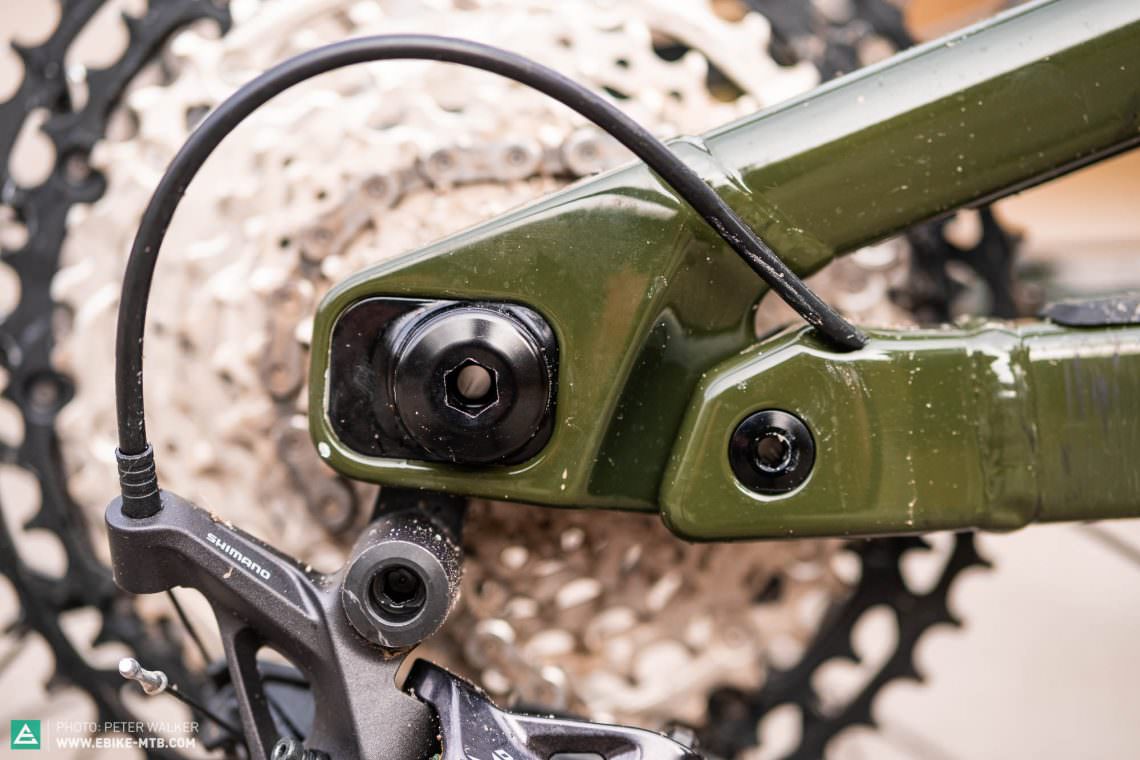
| Size | S | M | L | XL |
|---|---|---|---|---|
| Top tube | 586 mm | 611 mm | 638 mm | 671 mm |
| Seat tube | 380 mm | 420 mm | 445 mm | 480 mm |
| Head tube | 100 mm | 100 mm | 110 mm | 125 mm |
| Head angle | 64° | 64° | 64° | 64° |
| Seat angle | 76° | 76° | 76° | 76° |
| Chainstay | 437 mm | 437 mm | 437 mm | 437 mm |
| BB Drop | 27 mm | 27 mm | 27 mm | 27 mm |
| Wheelbase | 1,208 mm | 1,233 mm | 1,262 mm | 1,299 mm |
| Reach | 430 mm | 455 mm | 480 mm | 510 mm |
| Stack | 625 mm | 625 mm | 634 mm | 648 mm |
Our first riding impression of the Rocky Mountain Altitude Powerplay Carbon 70
We’ve already had the opportunity to ride the new Rocky Mountain Altitude Powerplay Carbon 70 test on a short test session in alpine terrain. On our test course, the Altitude had to prove itself mainly on steep, technical trails with nasty roots and rock gardens. Uphill, steep ramps and slippery terrain made for difficult testing conditions. The drive unit responds to the slightest touch of the pedal and the motor kicks in just as abruptly when you spin the cranks as it cuts off the support as soon as you stop applying pressure on the pedals. The Dyname 4.0 motor has virtually no hysteresis, which makes it feel completely different from all other motors currently available on the market. The main goal behind the Dyname 4.0 system was to create a motor that emulates the characteristics of a mountain bike that only pushes together with the rider. In practice, however, the power delivery doesn’t feel as natural. On technical climbs, you’ll have to time your pedal strokes and choose your line carefully if you want to use the power of the motor to clear obstacles. On slippery terrain, it’s hard to transfer the huge amount of power of the motor to the trail and prevent the rear wheel from spinning out of control. If you run the short chainstay configuration, the front end tends to lift off the ground and easily and loses traction. If you like to work your way up the mountain on steep trails, you’re better off using the long chainstay setting. If you manage to control the powerful motor using the correct body position and applying the right amount of pressure on the pedals, the Dyname 4.0 will do most of the hard work for you. Only a direct comparison will show whether the high-torque Dyname 4.0 motor can hold its own against the competition.
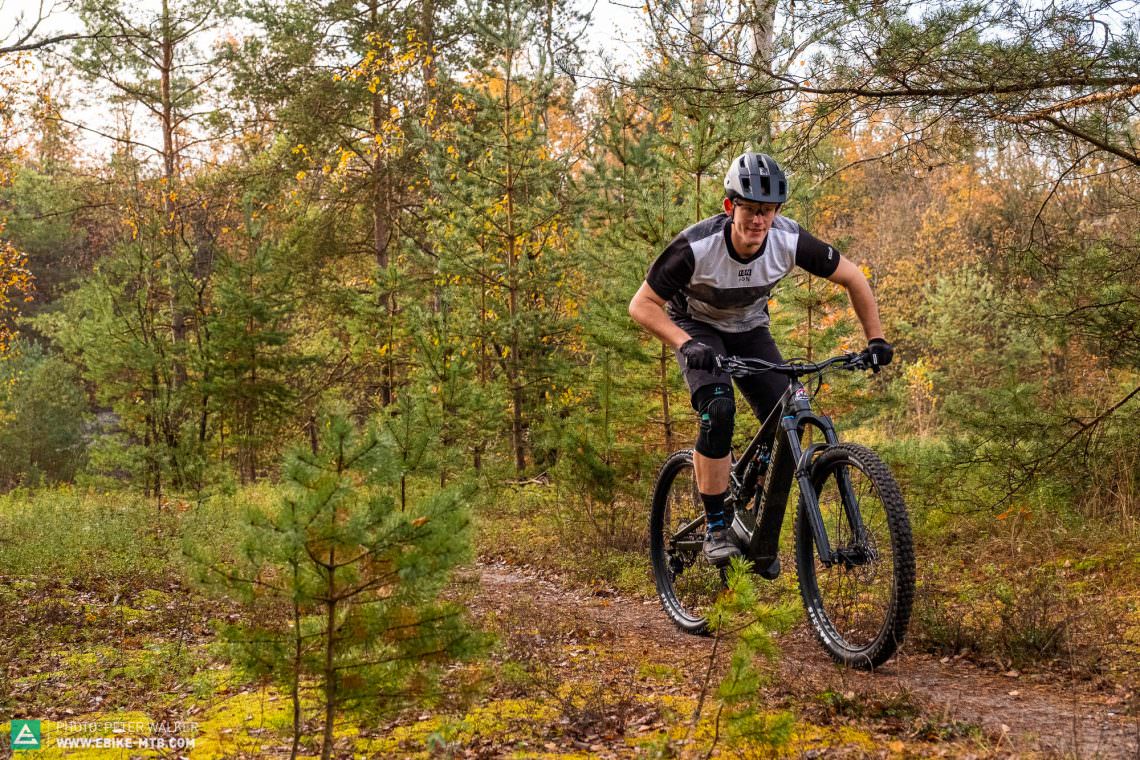
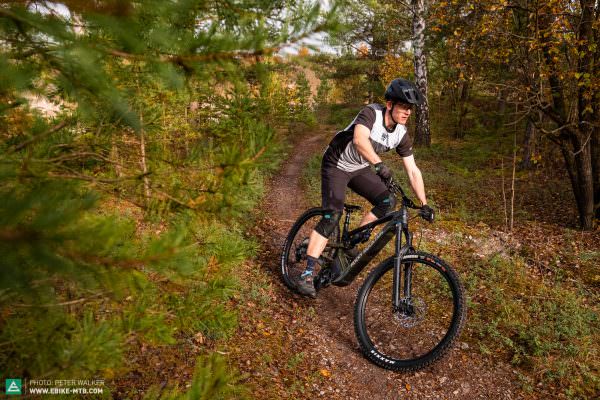
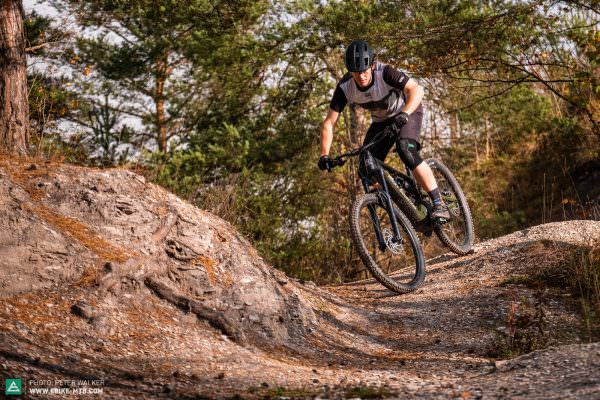
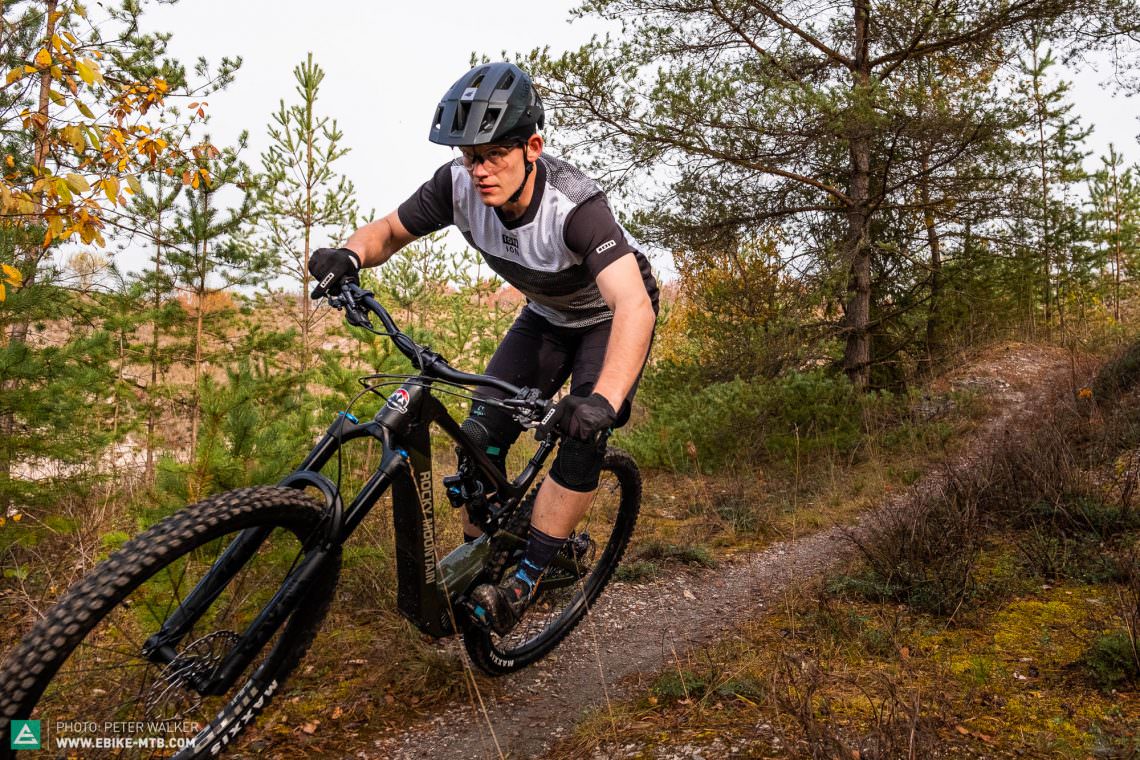
From the peak into the valley with the new Rocky Mountain Altitude Powerplay Carbon 70!
Although the pictures of this test suggest otherwise, we tested the Rocky Mountain Altitude Powerplay Carbon 70 mainly on challenging alpine trails in rugged mountain landscapes. Downhill, the Altitude impresses above all with its excellent traction. Here, the Rocky Mountain team really nailed it with the choice of tires: thanks to the robust casing, the Altitude can be ridden with low tire pressures, which allow the tires to conform to the terrain better on challenging descents. The suspension absorbs impacts and allows the tires to stick to the ground even better. On steep descents, this ensures excellent control and inspires tons of confidence. Downhill, the handling is more predictable and less demanding than on steep climbs, which makes the Altitude Powerplay easy to ride even for less experienced riders. On top of that, the motor is pleasantly quiet and doesn’t rattle like some of its competitors, ensuring even more fun downhill. Unfortunately, we didn’t have enough time to put the Altitude through the wringer on fast bike park tracks with big jumps. However, the new Altitude will get a chance to prove itself against the best eMTBs of the upcoming season in our next eMTB group test. As soon as we get a chance to put the new Altitude Powerplay through a thorough test, we’ll be able to tell you more about it.
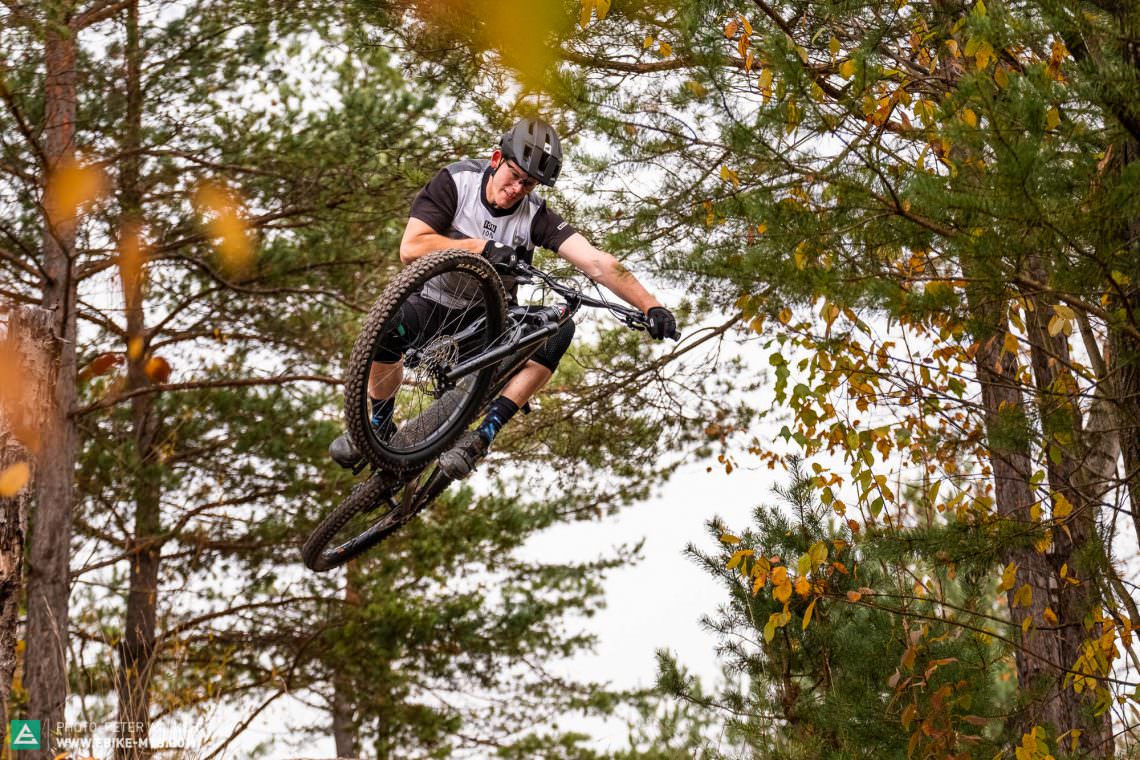
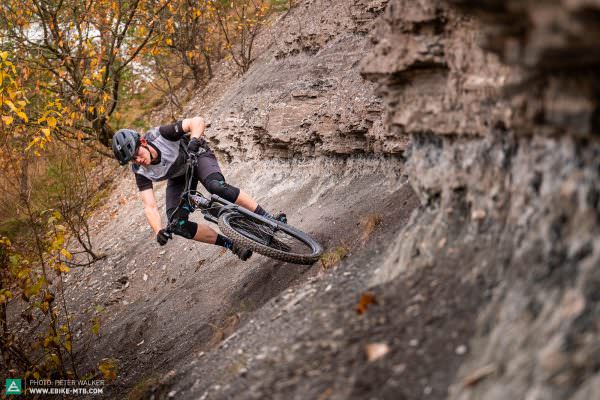

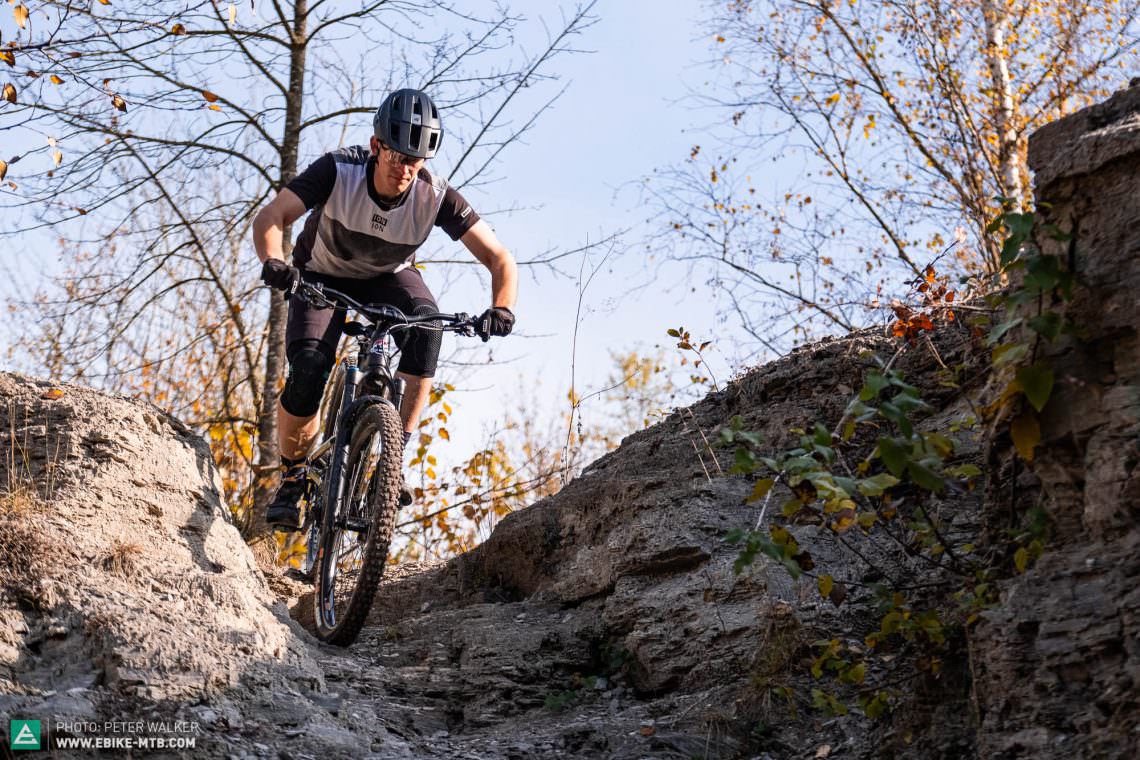
New Rocky Mountain Altitude Powerplay Carbon 70 – Our first impressions
With its revised Dyname 4.0 motor, the new Altitude Powerplay Carbon 70 is seamlessly following in the footsteps of its predecessor. Not only is the new motor extremely powerful, but also delivers its power directly, provided you take time to understand its unique character. While uphill the noise of the chain is constantly in the background, downhill the motor is incredibly quiet. The adaptable geometry and nearly flawless spec make the Altitude an attractive option for demanding descents.
Fore more infos visit bikes.com, that is actually the homepage of Rocky Mountain 😉
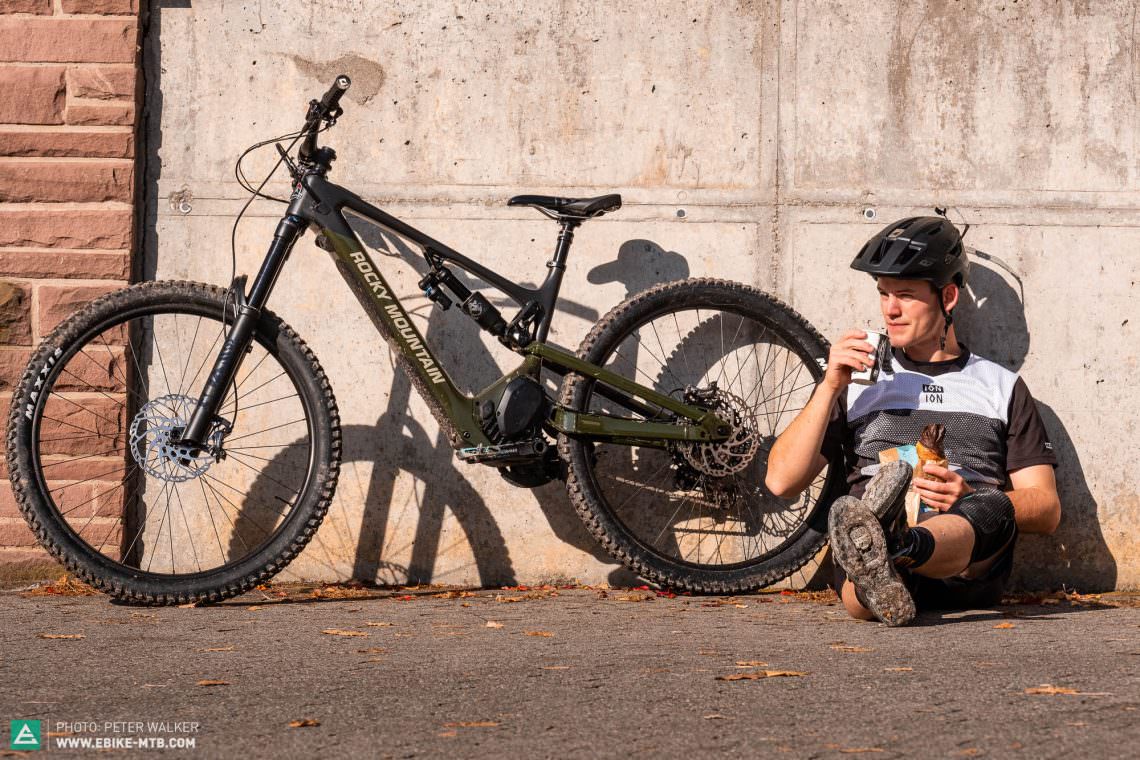
Did you enjoy this article? If so, we would be stoked if you decide to support us with a monthly contribution. By becoming a supporter of E-MOUNTAINBIKE, you will help secure a sustainable future for high-quality cycling journalism. Click here to learn more.
Words: Rudolf Fischer Photos: Peter Walker









